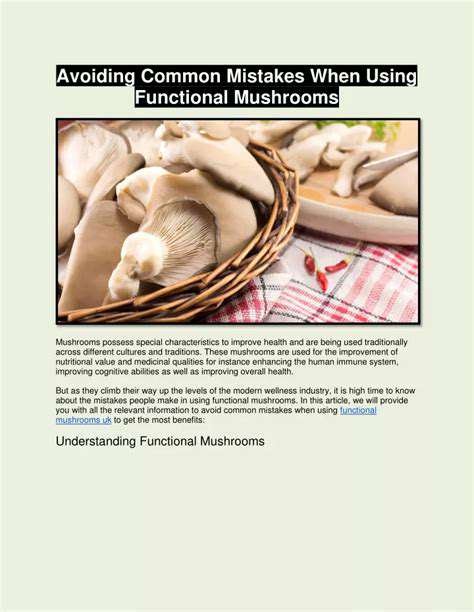How to Store Mushrooms: Keep Them Fresh Longer
Jun 22, 2025 / btwgardenmachine/
Proper Storage Environment
Creating the perfect environment for mushrooms is essential if you want them to stay fresh longer. These delicate fungi thrive in cool, dark places with high humidity. Losing too much moisture is the main reason mushrooms go bad quickly. For best results, keep them between 32°F and 40°F (0°C to 4°C) with 90-95% humidity. These conditions slow down the mushrooms' natural aging process.
Choosing the Right Containers
What you store mushrooms in makes a big difference in how long they last. Stay away from regular plastic bags – they create too much moisture and cause mushrooms to spoil faster. Paper bags or containers with small holes work much better because they let air move freely. This prevents moisture from building up and keeps your mushrooms in good shape.
Another great option is using a cardboard box with paper towels inside. This simple solution provides excellent air flow while controlling moisture perfectly.
Pre-Storage Preparation
Getting mushrooms ready for storage is just as important as how you store them. Gently clean off any dirt using a slightly damp cloth – be careful not to bruise them. After cleaning, pat them dry with paper towels. Removing extra moisture is crucial because it stops mold and bacteria from growing, which can ruin your mushrooms quickly.
Avoiding Cross-Contamination
Mushrooms easily pick up smells and flavors from other foods, so keep them separate. Store them in their own space, like a special drawer in your fridge or a cool pantry area. This isolation helps maintain their natural taste and texture.
Always use clean containers and surfaces when handling mushrooms. Leftover food particles can contaminate them, so cleanliness is extremely important.
Freezing for Long-Term Storage
For keeping mushrooms several months, freezing works well. First, blanch them by dipping in boiling water briefly, then plunging into ice water. This stops enzymes that cause discoloration and texture changes. After drying, pack them in freezer-safe containers. This method preserves both quality and flavor remarkably well.
Avoiding Common Mistakes in Mushroom Storage

Understanding Mushroom Identification
Correctly identifying mushrooms is vital for safety. Confusing edible mushrooms with poisonous ones can lead to serious illness or even death. Learn to recognize key features like cap shape, gill structure, and stem characteristics. Beginners should never eat wild mushrooms without confirmation from an expert.
While field guides with pictures help, they shouldn't be your only reference. Always double-check with multiple sources when identifying mushrooms.
Recognizing Poisonous Species
Many toxic mushrooms look almost identical to safe varieties. This makes identification tricky even for experienced foragers. Watch for small details like color changes when cut or specific patterns on the stem. When in doubt, consult with professional mushroom experts before consuming any wild mushrooms.
Gathering Mushrooms in Safe Locations
Where you collect mushrooms matters greatly. Never pick mushrooms near roads, industrial areas, or sprayed fields as they absorb toxins from their environment. Instead, look for clean, natural areas away from pollution sources. This ensures both safety and better flavor.
Proper Handling and Preparation Techniques
Even safe mushrooms need proper preparation. Always clean them thoroughly and cook completely to destroy any remaining toxins. Follow trusted recipes, especially when trying new mushroom types, as some require specific cooking methods to be safe.
Importance of Experienced Guidance
New mushroom enthusiasts should learn from experts. Experienced mycologists can teach proper identification and safe harvesting techniques. Joining local mushroom clubs provides hands-on learning opportunities and builds your knowledge safely.
Optimizing Storage Times Based on Mushroom Type

Optimizing Storage Environments
Different mushrooms need slightly different storage conditions. Maintaining perfect temperature and humidity prevents spoilage and extends freshness. Understand each variety's needs – some prefer slightly warmer or cooler temperatures than others.
For example, delicate chanterelles need more air circulation than sturdy portobellos. Adjust your storage methods accordingly for best results.
Efficient Storage Strategies
Organize your mushrooms properly in storage. Clear labeling helps you use older mushrooms first, preventing waste. Use containers suited to each mushroom type – some do better in paper bags while others need sealed containers.
Inventory Management
Keep track of what you have stored and when you stored it. Regularly checking your mushroom supply prevents forgotten items from spoiling. Simple systems like dates on containers make management much easier.
Preventive Maintenance
Regularly check your storage area's conditions. Fixing small issues early prevents bigger problems later. Clean storage spaces often and check for any temperature or humidity changes that might affect your mushrooms.
Storage Space Optimization
Arrange your storage to use space efficiently. Stackable containers and vertical storage can double your available space. Keep similar mushroom types together for easier access and better organization.
Security Measures
Protect your mushroom storage from pests and contamination. Proper sealing and regular inspections prevent insect problems. In commercial settings, controlled access ensures only trained staff handle the mushrooms.